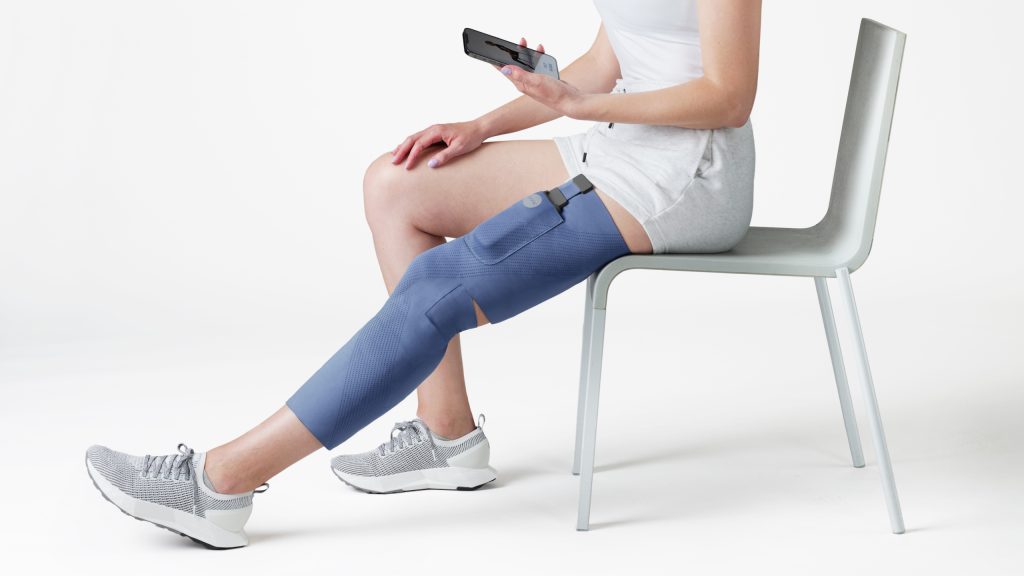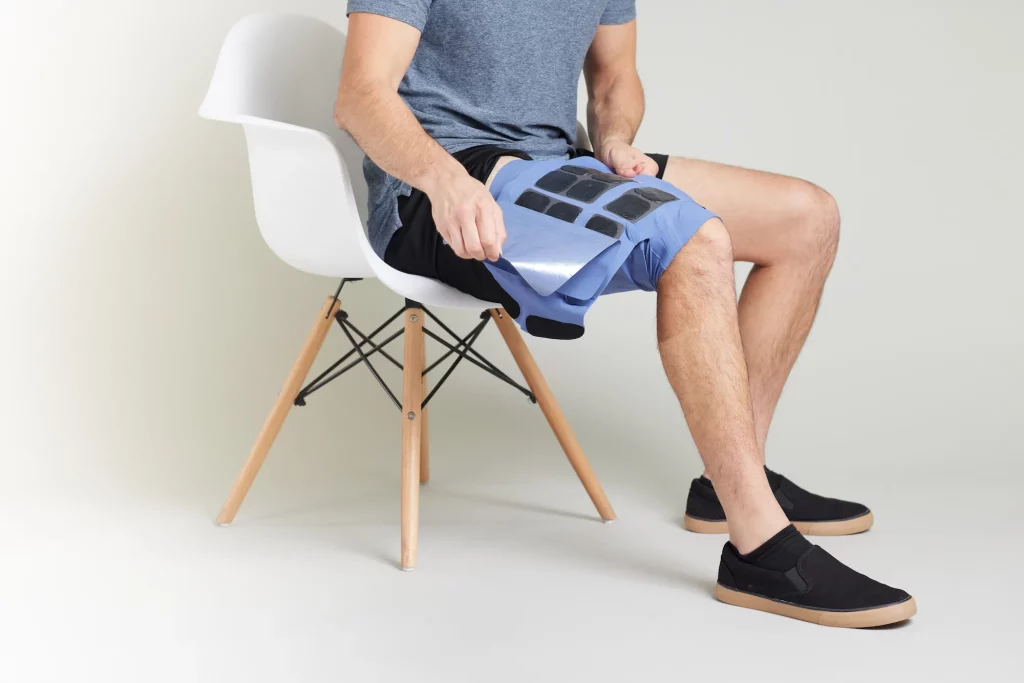Foot drop involves difficulty lifting the front part of the foot, a movement more scientifically known as dorsiflexion. If you’re unable to properly dorsiflex, it can cause you to drag your foot when you walk, which can impact mobility, independence, and overall quality of life. Possible treatments include using a foot drop brace, physical therapy, and functional electrical stimulation, or FES. In some cases, other interventions may be recommended.
What causes foot drop?
Foot drop itself is not a condition. Instead, it is a symptom of an underlying neurologic or neuromuscular disorder or injury. Causes of foot drop include:
- Neurologic diagnoses such as multiple sclerosis, cerebral palsy, amyotrophic lateral sclerosis (ALS), Parkinson’s disease, stroke, and spinal cord injuries
- Neuromuscular or muscular disorders such as spinal muscular atrophy, muscular dystrophy, Charcot-Marie-Tooth disease, or polio
- Nerve injuries such as lumbar radiculopathy or peroneal neuropathy
Treatments for foot drop
As mentioned, treatment for foot drop will depend on the underlying cause.
Treatments to help better manage it include:
- Braces or orthotics to help hold your foot in place and prevent the toes from dragging along the ground
- Exercises to help strengthen the dorsiflexors and stretch the calf muscles to improve ankle range of motion
- Electrical stimulation to help activate and strengthen the dorsiflexors
- Surgery to relieve pressure on the peroneal nerve due to entrapment
Why it’s important to treat foot drop
Reduced ankle mobility may seem inconsequential (though still bothersome) at first, but if left untreated, it can lead to significant gait abnormalities and postural changes, which may increase your risk of falling.
Often, to adjust for the inability to lift the foot, people with foot drop adopt compensatory movements, such as hiking the hip or circumducting the leg in order to clear the foot during the swing phase of gait. These compensatory mechanisms may result in muscle imbalances, joint pain, and faster rates of fatigue.
As foot drop worsens, walking becomes more challenging and can make it difficult or scary to leave the house. In some cases, people may become more isolated and experience anxiety and depression.
How a foot drop brace helps correct walking
AFOs (ankle foot orthoses) for foot drop work by supporting the ankle and helping to maintain the foot and ankle in a more neutral position in order to clear the foot during walking. This greatly reduces the risk of falling and helps improve overall stability.
Drawbacks of using an AFO long-term for foot drop
Although AFOs are widely used to manage foot drop, they also come with disadvantages, especially when used long-term. Research shows that semi-rigid, non-articulated AFO braces can compromise balance, due to the restriction of proprioceptive input from the tendons, muscles, and other tissues surrounding the ankle joint.
Additionally, many people find them to be uncomfortable and visually unappealing. Some even experience pain in their heels and swelling in their feet after using them for an extended period of time. And perhaps most importantly, AFOs do nothing to address the neural dysfunction that often causes foot drop.
When a foot drop brace is used long-term, the natural movement of the foot is restricted. This lack of movement can result in a phenomenon called “learned non-use”, during which “the lack of training may lead to the progressive deterioration of motor function” [cit]. Instead of facilitating muscle-re-education, it can accelerate declines in mobility.
A popular principle of neuro-rehab is to, “use it or lose it” [cit]. If your neural circuits are not actively engaged in lifting your foot for an extended period of time, they may begin to degrade.
FES to treat foot drop
Functional electrical stimulation, or FES, is a rehabilitative technique that delivers electrical stimulation to muscles and/or nerves to address weakness and dysfunction. First used in the 1960s to treat stroke survivors, FES has come a long way in helping people with foot drop, especially people with MS.
Most commonly, FES is used to treat muscle weakness in the leg (and associated foot drop), when caused by central nervous system disorders, such as MS, cerebral palsy, stroke, traumatic brain injury, or incomplete spinal cord injuries. Functional electrical stimulation has been found to improve walking, increase strength, improve range of motion, and even facilitate muscle re-education.
Clinical evidence suggests that functional electrical stimulation, when administered to all four major muscle groups of the leg and coordinated with the gait cycle, can help improve ankle dorsiflexion. In this multi-site study, functional electrical stimulation was delivered through first-of-its-kind, FDA-cleared, software-steerable bionic clothing, also known as the Cionic Neural Sleeve.
In back-to-back paired tests, 94% of participants experienced improved dorsiflexion at heel strike, and 88% of participants experienced reduced ankle inversion during the swing phase of gait. On average, participants in the same study showed a combined improvement of 9 degrees across dorsiflexion and inversion.
How does FES work when administered through the Cionic Neural Sleeve?
The Cionic Neural Sleeve combines the power of a multi-million-dollar gait lab with the therapeutic power of functional electrical stimulation. Through continuous motion analysis, sophisticated sensors can continuously monitor movement in real-time to deliver stimulation to the necessary muscles that are contributing to foot drop and other gait abnormalities.
With adaptive algorithms, the system continuously optimizes stimulation patterns to the quadriceps, hamstrings, calf, and shin based on the user’s unique needs. Fully app-controlled, stimulation can be adjusted from the palm of your hand. Plus, unlike other assistive devices, the Cionic Neural Sleeve is lightweight and discreet. The sleeve can be styled visibly with shorts or a skirt, or discreetly underneath pants or a skirt or dress.
Although FES can be very effective, not everyone with foot drop is a candidate for the Cionic Neural Sleeve. Your clinician can discuss your options and whether or not it is right for you.
Are there any side effects associated with FES?
Like any new treatment, FES may take some getting used to. The electrical stimulation itself should never be painful; however, users may feel a tingling or pulsing sensation in the muscles. At first, this can be uncomfortable. Adjusting stimulation parameters will help minimize discomfort. And over time, as you get used to it, stimulation may become much more tolerable.
During the adjustment period, you may also experience muscle soreness as your body adapts to the stimulation during walking.
Does the Cionic Neural Sleeve replace the need for using a foot drop brace?
One of the goals of wearing the Cionic Neural Sleeve is to take the place of an AFO. This may occur right away for some individuals, while for others it may take more time. The Neural Sleeve was designed to activate the body’s muscles during the gait cycle to improve walking, increase strength and range of motion, prevent disuse atrophy, and facilitate muscle re-education.
About CIONIC:
CIONIC is a bionic clothing company on a mission to superpower mobility for individuals with disabilities. The Cionic Neural Sleeve is an FDA-cleared clothing garment indicated to:
- Improve walking
- Increase strength and range of motion
- Facilitate muscle re-education
It is indicated for individuals with upper motor neuron disorders, including multiple sclerosis, stroke, cerebral palsy, incomplete spinal cord injuries, traumatic brain injuries, and more. Take the assessment to see if it’s a fit for you.

Individual results may vary, and the Neural Sleeve is designed to improve gait and strength for individuals with upper motor neuron diagnoses. Consult your doctor on medical decisions.






